A brief history of Tractor Tools Direct
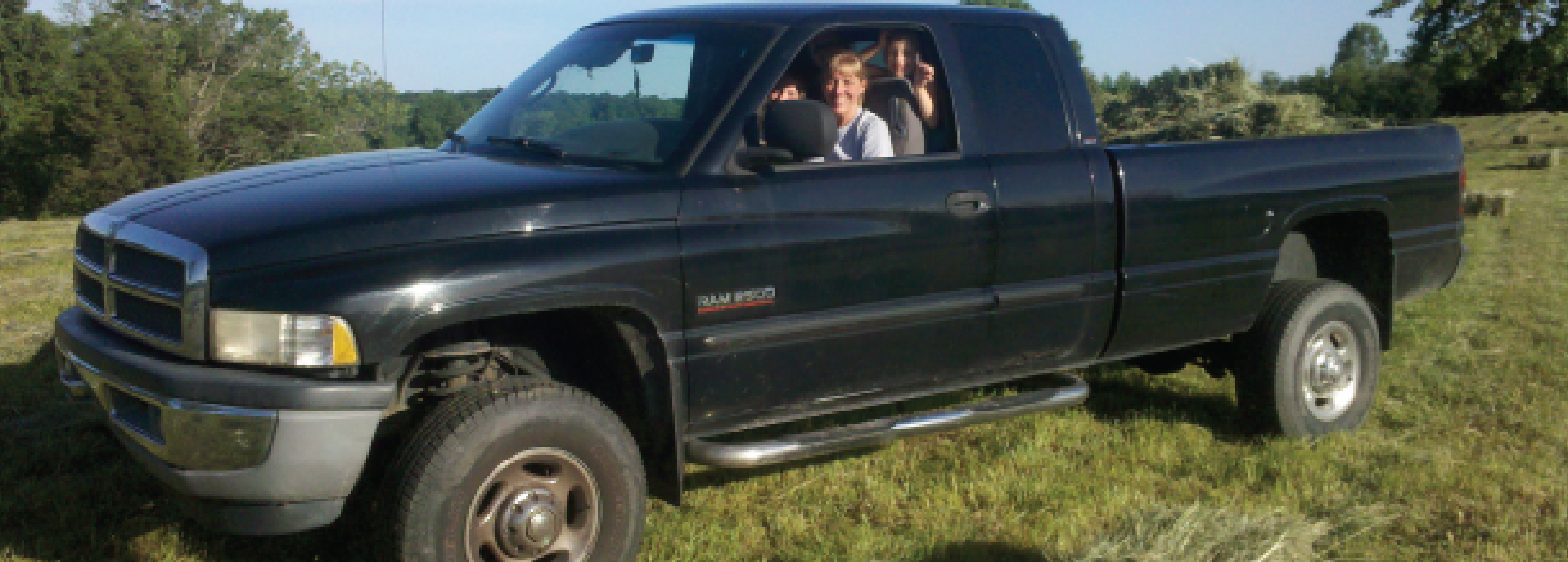
One look at the Tractor Tools Direct website and you will see that we are a very different type of tractor and hay equipment company. From our specialized equipment lines that meet the needs of the small-tractor owner to our e-commerce structure, TTD definitely provides a very one-of-a-kind equipment shopping experience. Why is TTD providing you–the hay-making enthusiast, orchard owner, grounds keeper—with such novel solutions to your equipment needs? Well, simply put, we are hoping to be able to use our passion for small farm equipment to help you use yours.
How did we come to have this vision? Why this interest in a “different” line of equipment? It all began with my husband, Pat, and the good ol’ mantra, “necessity is the mother of invention.” Let me tell you a little about how the Tractor Tools Direct adventure began and how the company was sparked by my husband’s own personal and necessary search for something “different”…….
The City Mouse Meets the Country Mouse
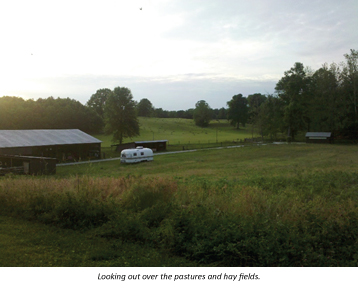
I’m not sure Pat realized what he was getting into when he married me nearly twenty years ago. A Rose-Hulman graduate and lifelong suburbanite, Pat soon found himself living on my family’s farm raising four kids, working full time as an engineer, and assisting my father, Ralph, with daily farm chores.
He quickly learned to feed and handle sheep, manage pastures and repair machinery along with many other jobs that just a few years before he would have never imagined himself doing. However, he found the most rewarding task to be mowing, tedding, raking and baling hay. At first I thought the long hours he spent on the tractor in the hay field might simply be an attempt to escape the demands of four tiny kids and their harried mom (and maybe they were), but I could tell that he truly loved it. His engineering mind found it a gratifying challenge to tame the wild summer grasses, carefully align the windrows and bale the forage into perfect rectangular packages. The time alone to think without interruption and take in the smells of summer also quickly became a tonic for his demanding life as a young working dad.
My family (especially my overworked dad) was excited and eager to train a new set of hands to help with the Katahdin hair sheep and hay-selling businesses. And as it turns out, it was a good thing that this indoctrination occurred so completely and seamlessly. Though things went without a hitch (pardon the pun—it’s also a family thing) for several years, that was all about to change come the spring of 2008.
A Change in Plans
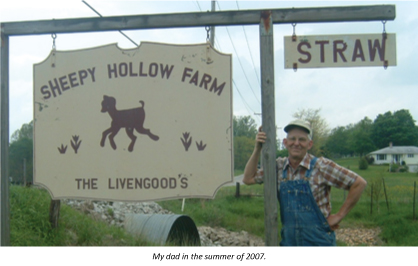
That April, my father, one of the hardiest guys you could ever know, was diagnosed with acute myeloid leukemia. With this diagnosis his health deteriorated rapidly and never rebounded before his death in October 2009. Even during the eighteen months he lived with cancer, and certainly after his death, it became necessary for Pat and me to pick up even more, and eventually all, of the farm responsibilities. Of these responsibilities, hay-baling soon became the most frustrating—not because of the actual task, but because of the forty to fifty year-old tractor and hay equipment that my father had always relied upon to accomplish the task. Actually, it would be more appropriate to say that the equipment had come to rely upon my dad and his countless hours of expertise and extra time to keep the antiquated machinery running. Though Pat had easily gained the knowledge to repair this equipment, with four kids, a full-time job and a myriad of other farm chores to complete, the time necessary to keep this aged equipment running was a commodity he just did not have.
To add to this, we quickly found that the size of the bales our baler produced now became a rather weighty problem (oops, sorry…did I do it again?). Though Pat could easily handle the seventy to eighty pound bales, the kids, our pre-teen hay help, and I, who would now need to help even more with the baling and feeding of these bales, could not. This led Pat to query: Was it is necessary that the bales on our farm or for our business be that heavy? No, was his conclusion. The demographics on the farm had changed; it was time for him to begin his search for something different……..
Finding the Right Equipment
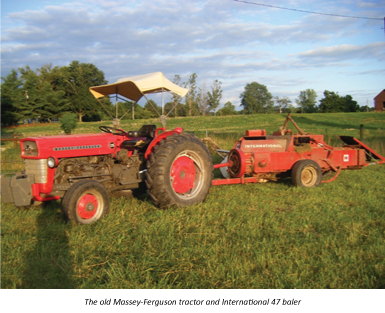
Thus began Pat’s quest to replace the family’s 50-year-old Massey Ferguson tractor and International Harvester baler. Though revered and romanticized family heirlooms, this machinery had become inefficient and uneconomical for our farm and business needs. To make an educated choice on the most suitable replacements, Pat determined the criteria a new tractor, baler and other implements would need in order to meet the evolving needs of our farm. The process he used was very much like the process he recommends any equipment buyer use in his Buyer’s Guide located on this website.
This criteria included:
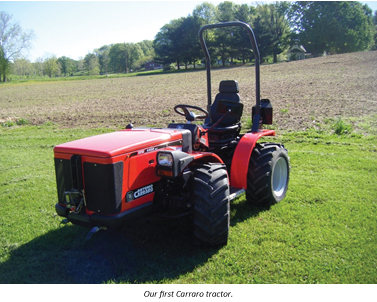
Soon after determining the necessary criteria our new equipment would need to meet, Pat came upon an Antonio Carraro tractor at the 2008 Indiana State Fair. He was immediately intrigued. Here was a tractor that could do everything on our list. Not only that, but it was fun to use. After researching the brand, he purchased one for our farm that fall.
With the tractor purchase made, Pat next tackled the job of researching various brands of compact-tractor hay equipment and other implements. As he recommends in his Buyer’s Guide, Pat first took into consideration the weight and horsepower of our new Antonio Carraro tractor and began fitting it to the criteria he had already formulated for equipment selection. By the next hay season, he had purchased both a small drum mower and a mini square baler. Several other implements including a forklift and plow soon followed.
Pat has not once looked back or second-guessed these purchases. He fell in love with our new equipment package—so much so, that by the summer of 2009 he had become a dealer for small farm equipment through his original company, Goodwin Concepts. Through this process to more efficiently equip our family farm, Pat found that though initially searching for a “different” type of farm machinery, the criteria he used to choose this equipment was not “different” from the criteria used by so many other equipment users out there. Many such users, from the multitude of small farmers to the grounds keepers, vineyard and orchard owners and pine-straw producers, were actively searching for the same kinds of “different” equipment.
As a matter of fact, Pat has found so many other people out there who are currently interested in compact tractors and small-scale equipment that managing his side business of Goodwin Concepts has become his full-time job as of March of 2013. Now with the start of a new year, 2014, and an ever increasing passion for his products, he is launching an expansion of this business now called Tractor Tools Direct. We hope you have enjoyed reading about his journey and are able to see that maybe it is not so “different” from your own. It’s simply the search to find the right tractor and the right implement for the right job!
—Marti Goodwin
Recent Posts
-
Boost Pine Straw Production Efficiency with Ibex Mini Round Balers
At Tractor Tools Direct, we're known for our high-quality hay equipment tailored for small farms …Dec 8th 2025 -
How to Winterize Your Tractor: Essential Maintenance Tips to Protect Your Investment
Farm equipment is one of the most valuable investments a farmer can make. At Tractor Tools Direc …Dec 1st 2025 -
Farm Tax ID Explained: Benefits, Eligibility, and How to Apply
As the end of the financial year approaches, it's a great time for small farmer operators to rev …Nov 12th 2025




